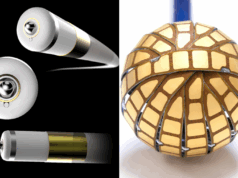 Medtronic has announced the results from two analyses demonstrating survival benefits and a reduction in life-threatening cardiac events with the use of implantable cardioverter defibrillators (ICDs).
Medtronic has announced the results from two analyses demonstrating survival benefits and a reduction in life-threatening cardiac events with the use of implantable cardioverter defibrillators (ICDs).
The data provide real-world evidence supporting the use of Medtronic ICDs for indicated patients, further reinforcing findings from landmark ICD studies, but in a contemporary patient population, the company said in a press release. Angelo Auricchio (Fondazione Cardiocentro Ticino, Lugano, Switzerland) presented the analyses at the European Society of Cardiology (ESC) congress (25–28 August, Amsterdam, The Netherlands).
ICDs are effective in providing therapy for patients at risk of ventricular tachycardia or ventricular fibrillation that can lead to sudden cardiac death (SCD). However, ICDs remain significantly underutilised in patients who are medically indicated for them, the company’s press release adds.
The first retrospective analysis aimed to determine the current impact of ICDs on survival in primary prevention patients. It used de-identified, real-world, contemporary data from 2012 through 2020. A total of 25,296 patients had a primary prevention ICD indication, of which 2,118 (8.4%) received an ICD within a year. Patients who received an ICD had a 24.3% lower risk of death than patients with similar characteristics who did not receive an ICD.
“ICD therapy has had a number of landmark clinical trials, dating back nearly two decades; over the years, both medical technology and optimal medical therapy have continued to evolve. These analyses show that today’s ICDs continue to positively impact patient survival—in tandem with modern heart failure medications,” said Auricchio.
The second real-world analysis examined the incidence of ICD therapy after routine device replacement in patients who did not receive therapy from their first ICD. De-identified data on 10,742 patients from the Medtronic CareLink database receiving a replacement device after 2012 through the present day was utilised: 9,397 primary prevention patients and 1,345 secondary prevention patients. Time-to-first appropriate therapy [either shock and/or anti-tachycardia pacing (ATP) therapy] after ICD replacement was evaluated through seven years post-replacement.
At seven years, the incidence of first appropriate therapy in primary prevention patients was 28% (17% shock and 24% ATP). For secondary prevention patients, the rates of first appropriate therapy were 24% (14% shock and 19% ATP).
Auricchio continued: “We should not assume that a primary or secondary prevention patient who did not receive therapy from their first ICD can go unprotected without a replacement device despite continuation of guideline-recommended pharmacological therapy. ICDs should continue to be offered as the gold standard for life-saving intervention for all indicated patients.”
These data on the benefits of ICDs in a contemporary patient population follow an analysis of commercially available Medtronic ICDs presented at the Heart Rhythm Society 2023 annual meeting (19–21 May, New Orleans, USA) showing nearly half of first-time ICD patients receive appropriate therapy for ventricular tachyarrhythmias through seven years post implant.









